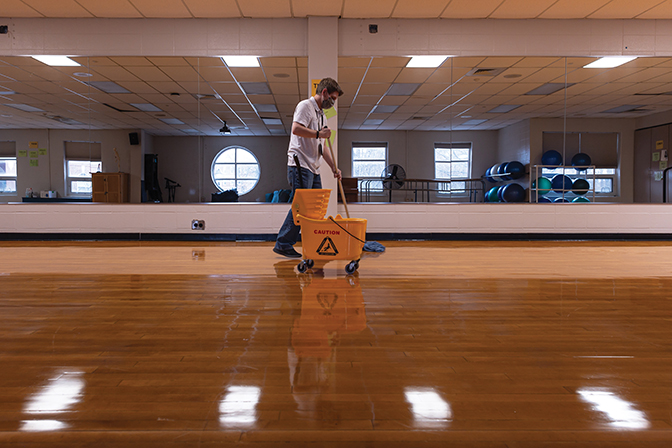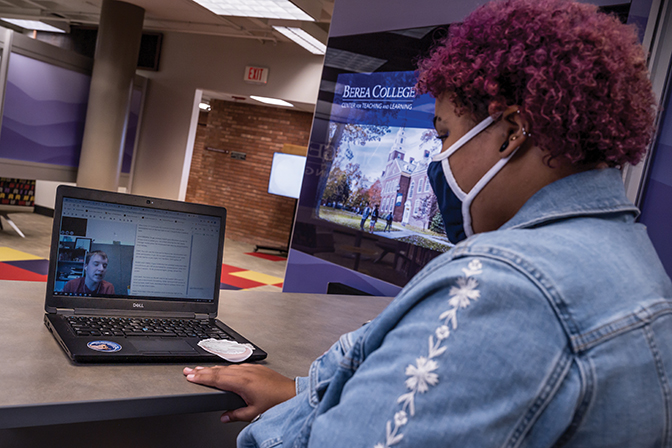The common narrative on work colleges is that students work their way through school, paying off their tuition with their labor. It may be the common narrative because that has been, historically, the simplest way to explain it. But like many popular accounts, the reality is a bit different—and a lot more complicated.
A longer, but still relatively simple version, is that Berea College students work off a portion of their tuition, but not nearly all of it. In fact, working off the annual tuition at Berea (more than $44,000 currently) at 10 hours per week would mean each student is paid about $138 per hour. The more complicated reality is that students, with various hourly rates depending on level of responsibility, and in combination with government grants, are making more than $30 per hour, with the bulk of that money going toward their tuition in the form of a scholarship, and a portion of it coming back to them in the form of a tax-free paycheck for their incidentals. The remainder of the tuition is a gift, given by a multitude of donors through the decades.
Berea is the only work college that provides students with a regular paycheck. At most other work colleges, the entirety of student labor is applied toward tuition, and there is still a tuition remainder that must be paid by the student. All work colleges have the goal of reducing student debt, but Berea College is unique in that no admitted student is presented with a tuition bill that often must be covered by student loans. Berea College remains a nonprofit, philanthropic institution that provides the kind of education typically reserved for wealthy students, with the additional and parallel feature of a work program that provides professional experience and education at the same time.
Berea’s work program has learning goals, just like in the classroom. As students progress to more skilled and responsible levels of work, including becoming supervisors, managers or other kinds of leaders, they also learn to intertwine work, learning and service. According to Collis Robinson ’13, Berea’s dean of Labor, the program provides students with experiential learning opportunities through work, and learning often overlaps with a student’s academic experience.

“Given that all students work, the labor program makes it possible for students to know each other as coworkers as well as classmates,” Robinson said. “More importantly, linking academics and labor establishes a pattern of learning through work that follows students long after college.”
Berea College is one of 10 federally recognized work colleges in the nation, and one of nine in the Work Colleges Consortium (WCC), which ensures that work colleges are in compliance with federal regulations. The other schools in the WCC are Alice Lloyd College (also in Kentucky), Bethany Global University, Blackburn College, College of the Ozarks, Kuyper College, Paul Quinn College, Sterling College and Warren Wilson College. Each school is unique and has its own model, but they share the requirement that all resident students work on campus. All work colleges are approved and overseen by the U.S. Department of Education and must meet federal requirements for operation. Though work requirements vary by institution, most require students to work a minimum of 10 hours per week.
Federal regulations also require work colleges to have a dean of work, who is called the dean of labor at Berea. There are many regulations, including those requiring compliance with the Fair Labor Standards Act. At Berea, there are more than 30 regulations the program must pay attention to, like timely payment, ensuring students clock-in
and have their time verified, having a job description for every position and making sure students are not doing homework on the clock. There are penalties for noncompliance for schools and administrators that parallel noncompliance in a regular academic program.
Money for the labor program at Berea is partially covered by government grants but grant money must be matched dollar-for-dollar by the College. This means the labor program is more of an expense than a way to reduce operational costs. In total, this system covers about 25 percent of tuition. The rest must be covered by endowment returns and annual fundraising.
Perhaps a more accurate phrasing is that Berea College students work their way up, not through. With a mission to educate the whole person—academically and professionally—Berea College is among the nation’s leading institutions in generating social and economic mobility for bright students who otherwise could not afford a quality college education. The academic program paired with the labor program uniquely prepares students for the next level, and the proof of concept is in their success after they leave school. That, in part, is what we call “the value of free.”
The Berea College Labor Program is designed to serve the following purposes:
- Support and provide through experiential learning opportunities the learning of skills, responsibility, habits, attitudes and processes associated with work.
- Provide and encourage opportunities for students to pay costs of board, room and related educational expenses.
- Provide staff for College operations.
- Provide opportunities for service to the community and others through labor.
- Establish a lifestyle of doing and thinking, action and reflection, service and learning that carries on beyond the college years.


